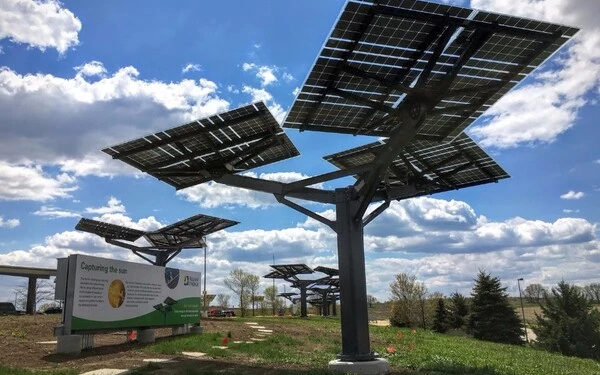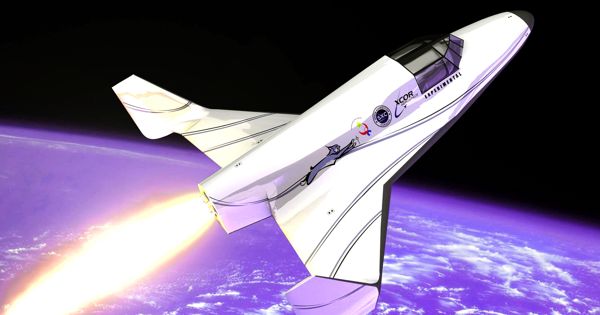In terms of the climate crisis, which would be the most effective use of a specific plot of land: planting a forest, which is a natural means of absorbing carbon dioxide from the atmosphere, or erecting fields of solar panels, which reduce carbon dioxide emissions into the atmosphere? Decision-makers all over the world have long debated this quandary. For the first time, we may have an answer to this question, based on findings from arid areas and comprehensive measurements of the energy flow exchanged between the ground and the atmosphere.
A verdant forest is one of the most iconic symbols of nature’s power, from the abundance of plant and animal life that thrives among its dense vegetation to the positive impact it has on Earth’s climate, thanks in part to photosynthesis, which removes carbon dioxide from the air and thus helps to mitigate the effects of global warming.
Cutting down tropical evergreen forests has exacerbated the climate crisis, and many environmental initiatives are centered on rehabilitating destroyed forests or planting new trees. The problem is that even if we covered the entire planet in trees, the resulting massive photosynthetic force would not be enough to absorb the massive surplus of carbon dioxide – the major greenhouse gas – that has been pumped into the atmosphere over the past 150 years of human activity.
There is another way to deal with the climate crisis that, unlike forests, is neither natural nor green, at least not in the literal sense. This man-made solution entails erecting fields of dark-colored solar panels. Clearly, solar energy production has a positive impact on climate balance because it replaces power plants that use fossil fuels such as coal and gas, reducing harmful emissions of greenhouse gases that accumulate at increasing concentrations in the atmosphere.
However, both the green, natural forest and the artificial, dark “solar forest” produce other effects, some of which are potentially harmful to the climate. They are both relatively dark, which means they absorb a large proportion of the Sun’s radiation (dubbed “low albedo” surfaces in the professional jargon) and thus heat up.
Our study unequivocally shows that in arid environments, where most of the open land reserves exist, building solar farms is far more effective than planting forests when it comes to dealing with the climate crisis.
Stern and Muller
Some of this energy is used for photosynthesis in natural forests or to generate electricity in solar “forests,” but the vast majority is returned to the atmosphere as energy fluxes, heating it up. In contrast, light-colored desert soil, for example, reflects a significant amount of sunlight back into space, which does not contribute to the accumulated heat in the atmosphere. (Such soil is known as a surface with a “high albedo.”)
What, then, would be the most effective use of a certain plot of land in terms of the climate crisis: planting a forest, which is a natural means of absorbing carbon dioxide from the atmosphere, or erecting fields of solar panels, which reduce the emission of carbon dioxide into the atmosphere? This dilemma has long been debated by decision-makers around the world.
Now, for the first time — based on findings from arid areas and on comprehensive measurements of the energy flow exchanged between the ground and the atmosphere — we may have an answer to this question, thanks to a new study led by Dr. Rafael Stern, Dr. Jonathan Muller and Dr. Eyal Rotenberg from Prof. Dan Yakir’s lab at the Earth and Planetary Sciences Department of the Weizmann Institute of Science. The study, published today in PNAS Nexus, was coauthored by Madi Amer, also from Prof. Yakir’s lab, and Dr. Lior Segev of Weizmann’s Physics Core Facilities Department.

A century of photosynthesis
The first stage of the study involved comparing the impact of a forest situated on the border of an arid area to that of a field of solar panels, or a solar farm, in an arid environment. Arid areas are characterized by a large amount of sunlight and a relative paucity of plant diversity and biomass, which makes them especially suited for large solar farms. Such fields already exist in Israel in the Arava and the Negev, and the government has plans to erect more in Jordan through an international collaboration.
Huge solar projects are underway elsewhere in the world, including in China’s deserts, and the European Union has long discussed plans to build solar farms in the Sahara. The Weizmann researchers drove down to the Arava in a truck carrying a specially designed mobile measuring station by Yakir and Rotenberg. They started by locating this measuring station near the solar panel field in order to measure the flux of energy between the ground and the atmosphere – as it occurs in an arid area without solar panels. The station was then placed inside the solar panel field itself, which required overcoming operational and safety challenges caused by the sensitivity of the panels, which had previously interfered with such measurements. At both locations, the experiments were repeated during different seasons of the year.
Finally, to compare their results to the similar process occurring in a forest, the scientists relied on data that Yakir and Rotenberg had collected over the past 20 years in Yatir Forest — the largest of the forests planted in Israel by the Jewish National Fund — on the northern edge of the arid Negev Desert.
The researchers discovered that while the albedo effect of both “forests” was similar, the absorption or prevention of carbon emissions was significantly different, favoring the solar forest. To round out the comparison, they calculated the points at which the opposing effects on the Earth’s climate – heating from both forests’ dark color and cooling from reduced atmospheric carbon dioxide – balance each other out, eventually lowering the concentration of greenhouse gases in the atmosphere as a result of natural forest photosynthesis or solar forest reduced electricity-production emissions.
It turns out that it takes two and a half years for the heat emitted by solar farms to be offset by the carbon emissions that are averted thanks to the energy they generate. This even takes into account the carbon emissions from the manufacture, transportation and operation of the panels, as well as of batteries used for electricity storage. In the case of a forest of similar size, it would take more than 100 years of photosynthesis to offset its heating effect.
The researchers also wanted to know how the heating and cooling ratios varied in different climates. Using data from similar measurements collected from satellites and databases, they discovered that the heating effect of planting large numbers of trees is smaller in more humid environments such as the tropics or temperate grassland regions such as Europe. Because the ground is darker to begin with, the albedo-related effect is smaller, and the carbon capture rate by trees is higher, the break-even point is reached within 15 to 18 years. They emphasize that it is important to remember that there is less open space available in these areas for planting new forests.
Stern and Muller explain: “Our study unequivocally shows that in arid environments, where most of the open land reserves exist, building solar farms is far more effective than planting forests when it comes to dealing with the climate crisis. In this environment, erecting solar panels on areas that are far smaller than forests (up to one hundredth of the size) will offset exactly the same quantity of carbon emissions.”
“However, forests currently absorb nearly one-third of humanity’s annual carbon emissions, so it’s critical to protect this capability and prevent the kind of widespread deforestation that occurs in tropical regions.” Furthermore, forests play an important role in the global rain cycle, biodiversity conservation, and a variety of other environmental and social contexts. As a result, our study concludes that we must protect the Earth’s forests, and that the best solution to the climate crisis is to combine the planting and rehabilitation of forests in humid regions with the construction of solar panel fields in arid regions.”
















